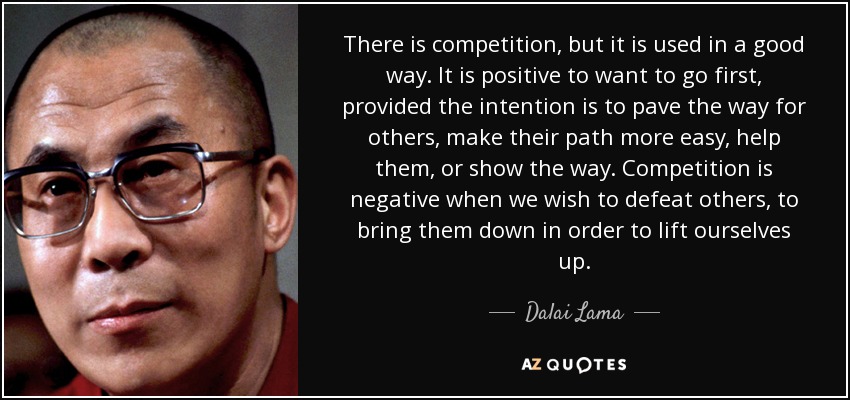Five Ways To Use Your Competitors To Improve Your Online Marketing Results
Your competitors are one of the most valuable tools that you have to improve the result of your online marketing efforts. You can glean information, get ideas, and develop strategies based on watching your competitors. One of the best things about this approach is that it doesn’t take up much of your time or resources.
You won’t have access to all of the information that your competitor has about their site and online marketing results, but watching your competitors closely can be like getting free resources for your marketing team – your competitor does the research, spends the money, and you then replicate what works.
There are two important points to make before going on. The first is that you shouldn’t copy directly what your competitors do. That isn’t proper, plus you are likely to get called out by increasingly savvy customers. Secondly, this can’t be your only strategy. It can be a useful tool and it can get meaningful results, but you will not get very far if you spend all of your time following others and not coming up with your own ideas.
That being said, here are five ways that you can use your competitors to improve your online marketing results:

1. Get Content Ideas
It is not easy to come up with content on a regular basis, while keeping that content fresh and relevant. If you have ever tried to write a blog with frequent postings you will know how difficult it can be. This is one of the reasons you should review the content of your competitors. Have they covered topics that you have missed? Have they approached an issue from an angle that you have not tackled yet? Can you think of a new twist to add to one of their ideas, or a new way of presenting the information?
Often the most time consuming part of developing online content is coming up with the ideas, so having a resource that gives you these ideas for free is valuable. There is more, though, as you can also use the content on your competitor’s website and social media platforms to benchmark against your own. Does it give the user better information? Is it easier to read? Do they use media in a way that is more helpful than on your site? Using this information you can make improvements to your content so that it becomes better than that of your competitor.
2. Link Ideas
Building links is still an important part of any SEO strategy. These days it involves building relationships with high authority websites and sharing your content with them. If your content is good enough you have a good chance of getting a link.
Who should you target your efforts towards, however? You will probably know the main blogs, websites, journalists, and influencers in your area and/or industry, but you probably won’t know which ones are likely to give you a link. Also, you won’t really know what sort of content they are more inclined to link to.
This is where your competitors come in. By analysing their backlink profile you can find out what content on their website is getting the most links, and where those links are coming from. You shouldn’t copy this directly, but you can use what you find within your own strategy, creating the right sort of information, and targeting it at the right people and websites.
3. Pick Up Some Of Their Social Media Followers
Your social media marketing strategy probably involves growing your audience. You can use many different strategies to achieve this but one of the most common is the copy follow. This involves looking at the followers of other social media accounts that are similar to yours, and reaching out to those followers by following them, liking their posts, etc. The aim is that these people will follow you back and will start to engage with your brand.
Your competitors are a good place for finding copy follows, particularly if they have a strong social media following.
4. Strength And Weakness Analysis
This option is a bit more resource intensive than the other ideas on this list as it involves closely watching your competitor’s initiatives to find the ones that work, and those that don’t. Some of this will be obvious – a Facebook page that is rarely updated, and only contains promotional posts, may be a weakness in your competitor’s online strategy that you can exploit.
Similarly, you might find that your competitor is ranking higher than you in PPC campaigns. This is a strength that you should study. You won’t necessarily know what they are bidding but you can analyse the content of their ad and their landing page. Are they better than yours? Can you make improvements? The same can be applied to organic search results.
5. Brand Building
Building a brand that is unique, memorable, and easily identifiable is crucial. This applies online as much as it does in other aspects of your business. The beauty with online is that you can monitor the development of your competitor’s brand to help you tweak and adjust your own strategy.
Do they target an audience that you have yet to reach out to? Is the tone of language that they use different from yours? Is their website more youthful and exciting? Is their website better suited to the target market than yours? Do they have consistency in their brand message across various platforms, and are there lessons that you can learn from that?
You can analyse all these questions and more as you look at your competitor’s brand, working out the positives and the negatives.
Finally, you don’t have to restrict this observation to your competitors. Another group of companies and organisations that are worth watching are those who work in your industry in a different jurisdiction. They might not be competing for the same customers as you, but they are competing with someone. Pick the best of those companies and work through the five points. Not all of them will be applicable in all situations, but most of them will give you valuable information to work with.


